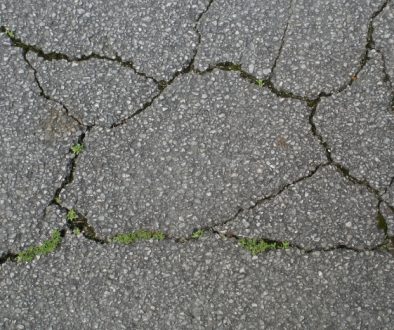Common Sealant Failures and What They Say About Your Prep Work
When cracks reappear just months after sealing, or when the sealant starts pulling away from the pavement, the issue often isn’t the sealant itself – it’s the preparation. Even with high-quality materials, improper surface prep is one of the leading causes of crack sealing failure.
Understanding what went wrong can help prevent costly rework and downtime in the future. Here are the most common types of sealant failures and what they reveal about the underlying prep work:
1. Sealant Pulling Away from the Crack Walls
What it looks like:
The sealant lifts or peels away from the sides of the crack, often leaving a thin film of material still attached to one side.
What it means:
This is almost always caused by poor adhesion, which occurs when the crack wasn’t properly cleaned or dried before applying sealant. Dust, moisture, or oil residue acts as a barrier between the pavement and the sealant, preventing a strong bond.
How to prevent it:
Use a Hot Air Lance to clean and dry the crack immediately before sealing. LAB Manufacturing’s flame-free Hot Air Lance blasts away debris and moisture with high-velocity superheated air, creating a clean, dry surface that maximizes adhesion and helps prevent pull-away failures.
2. Sealant Sinking Below the Surface
What it looks like:
After a few days, the sealed crack appears lower than the surrounding pavement, almost as if the sealant “disappeared.”
What it means:
This typically happens when cracks weren’t fully cleaned or dried and moisture was trapped beneath the sealant. As the moisture evaporates or the pavement expands, the sealant settles or sinks into the void.
How to prevent it:
Ensure that all moisture is removed from the crack before applying sealant. The Hot Air Lance is specifically designed for this step: it dries even deep-set moisture that simple blowers can’t reach.
By eliminating hidden dampness, crews can maintain consistent fill levels and prevent premature sinking.
3. Cracks Reopening or Widening Too Soon
What it looks like:
Cracks reappear within a season or two, sometimes wider than before, with sealant visibly split or pulled apart.
What it means:
Inadequate heating and surface preparation are often to blame. If the pavement and crack edges aren’t warmed properly before sealing, the sealant can cool too quickly and lose flexibility, making it more prone to splitting during thermal expansion and contraction.
How to prevent it:
Preheating the crack with a Hot Air Lance ensures a consistent temperature and removes moisture while also improving the sealant’s bond. The result is a more elastic, longer-lasting repair that withstands the stress of freeze-thaw cycles, especially important in fall and winter.
4. Sealant Tracking or Sticking to Tires
What it looks like:
Freshly applied sealant sticks to tires or tracks across the pavement.
What it means:
This usually happens when the surface is contaminated with loose dust or fine debris, which prevents proper curing. It can also occur when the surface isn’t preheated, causing the sealant to stay too soft for too long.
How to prevent it:
Thorough surface prep is key. Hot Air Lances clear all fine particles and warm the crack area, allowing the sealant to cure more evenly. This prevents tracking, improves finish quality, and keeps jobsites cleaner and safer.
5. Sealant Failing at the Edges of the Crack
What it looks like:
The edges of the sealant start lifting or curling away from the pavement, leaving gaps where water can re-enter.
What it means:
The crack edges were likely dirty, damp, or uneven before sealing. Without proper prep, sealant can’t anchor itself securely to the pavement, especially under traffic and temperature changes.
How to prevent it:
Use a Hot Air Lance to clean and shape the crack edges before sealing. The combination of heat and airflow softens the pavement edges slightly and clears out debris, allowing the sealant to form a strong, flexible bond that lasts.
Preparation Is Everything
Sealant failures are rarely the fault of the material – they’re almost always the result of rushed or incomplete prep. The right tools can make all the difference.
LAB Manufacturing’s flame-free Hot Air Lances are designed to help crews clean, dry, and preheat cracks in one efficient step – reducing rework, improving bond strength, and ensuring the job is done right the first time.
Proudly made in the USA and hand-tested for performance, out Hot Air Lances set the standard for reliability and quality in crack sealing preparation.
Ready to eliminate sealant failures from your projects?
Discover how a Hot Air Lance can help you prepare better and seal smarter.




